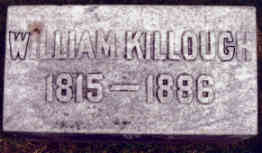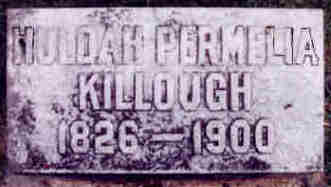Killough Springs is a sub-division now
located in the eastern section of Birmingham, AL. It was built on part
of the original Killough Plantation.
The story begins with James Killough, twin brother to the Isaac Killough whose family died in the Killough Massacre in Texas in 1838. Both James and Isaac had migrated from South Carolina to Georgia to Tennessee to Jefferson Co., Alabama. In 1831, James and his wife, Sarah, established what was known as The Killough Place or the Killough Plantation. They had fifteen children. The eleventh child, William M. Killough, was only eighteen when his father died. He was the one to develop the plantation and claim a homestead title signed during the administration of Pres. James Buchanan. The farm was on Indian hunting grounds and early settlers told of seeing natives there.
The original structure was an old time manor house and was expanded from time to time until it was a two-storied house of at least eight rooms. The site was near Five Mile road between the present Killough Circle and Killough Drive. It stood for almost a hundred years until it was destroyed by the builders of Killough Springs subdivision in the mid-twenties.
In the woods near the big springs, there was a white frame church, probably the replacement for a log church provided for the Killough plantation’s laborers.
Five Mile Presbyterian Church on Five Mile Road was organized by William Killough and several other pioneers in Killough’s front room. William was the first person buried in the adjoining cemetery. An earlier cemetery located west of the homestead was enclosed by subdivision lots and is now almost destroyed.
 |
 |
Two of William and Sarah’s five children were physicians. His oldest son, James Christopher Killough (1814-1870), was a distinguished soldier for the Confederate States of America. He graduated from Washington Univ. Medical School. Soon after he began practice at the Killough home place, he was infected with a fever and died.
John Newton Killough (1865-1931) was graduated from the Oak Grove School at Huffman (Jefferson Co., Al) and the Kentucky School of Medicine. He maintained an office at the home place. In 1901, he spent some time at John Hopkins Univ. Med. School after which he moved his practice to Woodlawn (Birmingham, AL). In the twenties Dr. Killough sold a plot of land including the Killough home place to a developer who sold estate lots of several acres each.
Edgar C. Blackburn, a descendant of William, said
that seven generations of Killoughs had lived on the plantation. In
1996, he sold the last of the Killough place. A house on the property
was given to St. John United Methodist Church and is being used for the
associate minister’s parsonage. Land was also donated and a home
constructed for retired Methodist ministers on part of the land belonging to
William M. Killough.